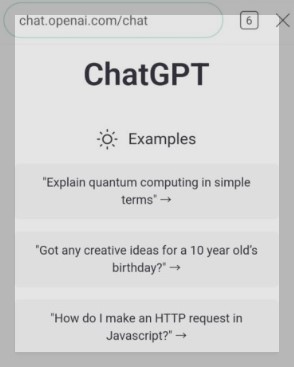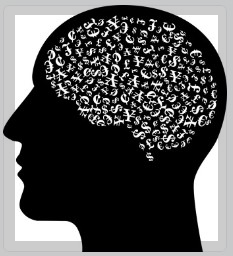반응형
챗GPT(챗지피티, ChatGPT)가 대체 뭐야? 기본개념 총정리

I. Introduction:
- What is ChatGPT?:
ChatGPT is an open-source language model developed by OpenAI, one of the largest AI research organizations. It is based on the transformer architecture and uses deep learning techniques to generate human-like text. - ChatGPT란?:
ChatGPT는 가장 큰 AI 연구 기관 중 하나인 OpenAI에서 개발한 오픈 소스 언어 모델입니다. 변환기 아키텍처를 기반으로 하며 딥 러닝 기술을 사용하여 사람과 유사한 텍스트를 생성합니다. - Brief history and development of ChatGPT:
ChatGPT was first introduced by OpenAI in 2019 as a continuation of their GPT (Generative Pretrained Transformer) series of models. Since its release, it has been updated and improved multiple times, becoming one of the largest and most advanced language models in existence. - ChatGPT의 간략한 역사 및 개발:
ChatGPT는 2019년 OpenAI에서 GPT(Generative Pretrained Transformer) 모델 시리즈의 연속으로 처음 소개되었습니다. 출시 이후 여러 번 업데이트되고 개선되어 현존하는 가장 크고 가장 진보된 언어 모델 중 하나가 되었습니다.

II. Technology:
- How does ChatGPT work?:
ChatGPT uses a deep neural network trained on massive amounts of text data to generate text that resembles human writing. It works by predicting the next word in a sequence of words given a prompt or context, allowing it to generate coherent and fluent responses to questions and statements. - ChatGPT는 어떻게 작동하나요?:
ChatGPT는 방대한 양의 텍스트 데이터에 대해 훈련된 심층 신경망을 사용하여 사람이 쓴 것과 유사한 텍스트를 생성합니다. 프롬프트나 컨텍스트가 주어진 일련의 단어에서 다음 단어를 예측하여 질문과 진술에 대해 일관되고 유창한 응답을 생성할 수 있습니다. - Neural network architecture (Transformer):
The ChatGPT model is based on the transformer architecture, a type of neural network that has been particularly successful in natural language processing tasks. The transformer architecture is designed to process sequences of data, making it well-suited for tasks involving language. - 신경망 아키텍처(Transformer):
ChatGPT 모델은 자연어 처리 작업에서 특히 성공적인 신경망 유형인 변환기 아키텍처를 기반으로 합니다. 변환기 아키텍처는 데이터 시퀀스를 처리하도록 설계되어 언어와 관련된 작업에 적합합니다.

- Training data and process:
The ChatGPT model is trained on a massive corpus of text data, which allows it to learn patterns and relationships in language. The training process involves presenting the model with sequences of words and adjusting the parameters of the network to minimize the difference between its predictions and the actual next word in the sequence. - 교육 데이터 및 프로세스:
ChatGPT 모델은 언어의 패턴과 관계를 학습할 수 있는 방대한 텍스트 데이터 코퍼스에서 학습됩니다. 학습 프로세스에는 일련의 단어로 모델을 제시하고 네트워크의 매개 변수를 조정하여 예측과 시퀀스의 실제 다음 단어 간의 차이를 최소화하는 작업이 포함됩니다.
III. Capabilities(기능):
- Natural language processing and generation:
ChatGPT is capable of performing a wide range of natural language processing (NLP) tasks, such as text generation, completion, and summarization. This allows it to generate coherent and fluently written text that resembles human writing. - 자연어 처리 및 생성:
ChatGPT는 텍스트 생성, 완성, 요약과 같은 광범위한 자연어 처리(NLP) 작업을 수행할 수 있습니다. 이를 통해 사람의 글과 유사한 일관되고 유창하게 작성된 텍스트를 생성할 수 있습니다. - Dialogue systems and chatbots:
ChatGPT can be used as a component in dialogue systems and chatbots, providing responses to user input in a conversational manner. This makes it a powerful tool for customer service and support, as well as for personal assistants and productivity tools. - 대화 시스템 및 챗봇:
ChatGPT는 대화 시스템 및 챗봇의 구성 요소로 사용되어 대화 방식으로 사용자 입력에 대한 응답을 제공할 수 있습니다. 따라서 고객 서비스 및 지원은 물론 개인 비서 및 생산성 도구를 위한 강력한 도구가 됩니다. - Text completion and summarization:
ChatGPT can also be used for text completion, where it generates missing words or phrases in a sentence or document. It can also be used for summarization, where it generates a shortened version of a longer piece of text while retaining its essential meaning. - 텍스트 완성 및 요약:
ChatGPT는 문장이나 문서에서 누락된 단어나 구를 생성하는 텍스트 완성에도 사용할 수 있습니다. 또한 본질적인 의미를 유지하면서 더 긴 텍스트의 단축 버전을 생성하는 요약에 사용할 수 있습니다. - Question-answering and information retrieval:
ChatGPT can be used for question-answering and information retrieval, where it answers questions and retrieves relevant information from a large corpus of text. - 질문 답변 및 정보 검색:
ChatGPT는 질의 응답 및 정보 검색에 사용할 수 있으며, 여기에서 질문에 답하고 대량의 텍스트 코퍼스에서 관련 정보를 검색합니다.
IV. Applications(애플리케이션):
- Customer service and support:
ChatGPT can be used as a component in chatbots and other AI-powered customer service systems, providing quick and accurate answers to customer questions and inquiries. - 고객 서비스 및 지원:
ChatGPT는 챗봇 및 기타 AI 기반 고객 서비스 시스템의 구성 요소로 사용되어 고객 질문 및 문의에 빠르고 정확한 답변을 제공할 수 있습니다. - Personal assistants and productivity tools:
ChatGPT can be integrated into personal assistant apps and productivity tools to provide users with relevant information and recommendations based on their input. - 개인 비서 및 생산성 도구:
ChatGPT는 개인 비서 앱 및 생산성 도구에 통합되어 사용자에게 입력을 기반으로 관련 정보 및 권장 사항을 제공할 수 있습니다. - Interactive fiction and games:
ChatGPT can be used to create interactive fiction and games, where users engage in conversations and dialogue with AI characters. - 대화형 소설 및 게임:
ChatGPT는 사용자가 AI 캐릭터와 대화 및 대화에 참여하는 대화형 소설 및 게임을 만드는 데 사용할 수 있습니다. - Marketing and advertising:
ChatGPT can be used for marketing and advertising, such as generating product descriptions and advertisements, and providing personalized recommendations to users. - 마케팅과 광고:
ChatGPT는 제품 설명 및 광고 생성, 사용자에게 개인화된 권장 사항 제공과 같은 마케팅 및 광고에 사용될 수 있습니다.
V. Limitations and Ethical Considerations(제한 및 윤리적 고려 사항):
- Bias and fairness in language generation:
As with all AI systems, ChatGPT is not immune to the presence of bias in its training data. This can result in biased and unfair language generation, which is a concern that must be addressed. - 언어 생성의 편견과 공정성:
모든 AI 시스템과 마찬가지로 ChatGPT도 훈련 데이터의 편향에 영향을 받지 않습니다. 이로 인해 편향되고 불공평한 언어 생성이 발생할 수 있으며, 이는 반드시 해결해야 할 문제입니다 - Safety and security concerns with AI systems:
There are also safety and security concerns with AI systems, such as the potential for malicious use of the technology. Ensuring that AI systems are developed and used responsibly is crucial for their long-term success and acceptability. - AI 시스템의 안전 및 보안 문제:
기술의 악의적인 사용 가능성과 같은 AI 시스템의 안전 및 보안 문제도 있습니다. AI 시스템이 책임감 있게 개발되고 사용되도록 보장하는 것은 장기적인 성공과 수용성을 위해 매우 중요합니다. - Responsible usage and future development of AI technology:
As AI technology continues to advance, it is important to consider the ethical implications and responsible usage of these systems. This includes ensuring that AI systems are developed and used in a way that benefits society as a whole and minimizes potential negative consequences. - AI 기술의 책임 있는 사용 및 향후 개발:
AI 기술이 계속 발전함에 따라 이러한 시스템의 윤리적 의미와 책임 있는 사용을 고려하는 것이 중요합니다. 여기에는 AI 시스템이 사회 전체에 이익이 되고 잠재적인 부정적인 결과를 최소화하는 방식으로 개발되고 사용되도록 보장하는 것이 포함됩니다.
VI. Conclusion(결론):
- The impact of ChatGPT and AI technology on society and industry:
ChatGPT and AI technology more broadly have the potential to revolutionize many aspects of society and industry, such as customer service and support, personal productivity, and marketing and advertising. - ChatGPT 및 AI 기술이 사회와 산업에 미치는 영향:
ChatGPT 및 AI 기술은 고객 서비스 및 지원, 개인 생산성, 마케팅 및 광고와 같은 사회 및 산업의 여러 측면을 보다 광범위하게 혁신할 수 있는 잠재력을 가지고 있습니다. - Future trends and developments in NLP and AI:
As NLP and AI continue to evolve, we can expect to see further improvements in the capabilities and applications of these technologies. This will likely lead to new and innovative uses of language models like ChatGPT, as well as the development of new techniques for improving their performance and addressing limitations. - NLP 및 AI의 향후 동향 및 개발:
NLP와 AI가 계속 발전함에 따라 이러한 기술의 기능과 응용 분야에서 추가 개선을 기대할 수 있습니다. 이것은 ChatGPT와 같은 언어 모델의 새롭고 혁신적인 사용과 성능을 개선하고 한계를 해결하기 위한 새로운 기술의 개발로 이어질 것입니다.
반응형
댓글